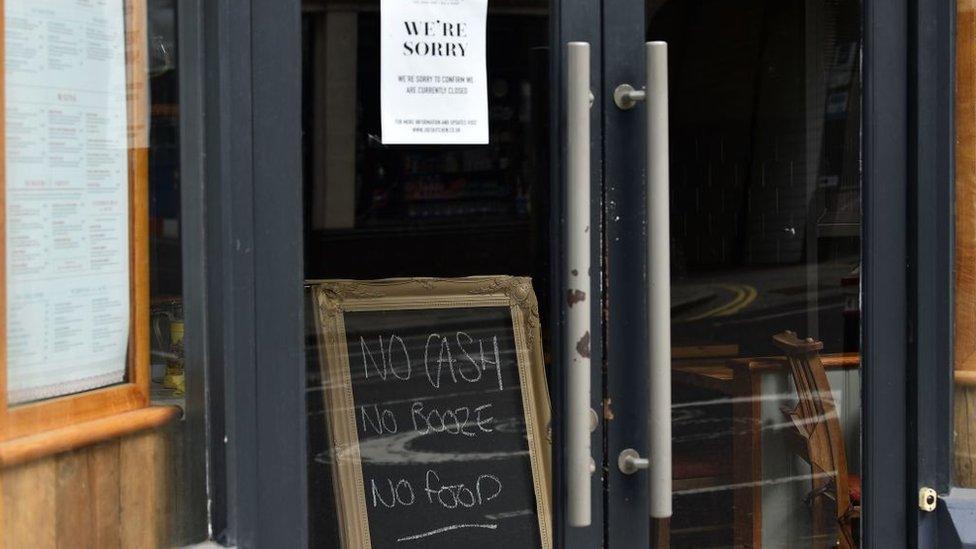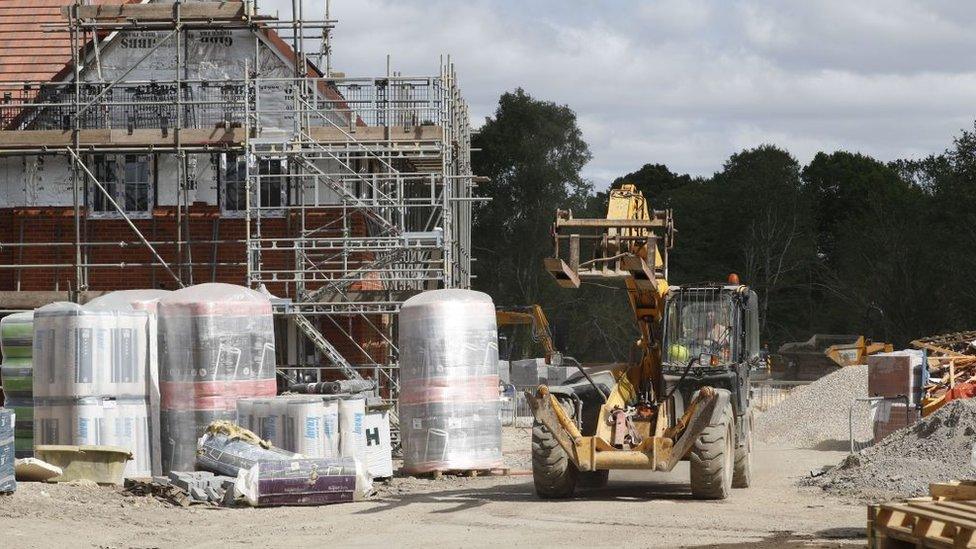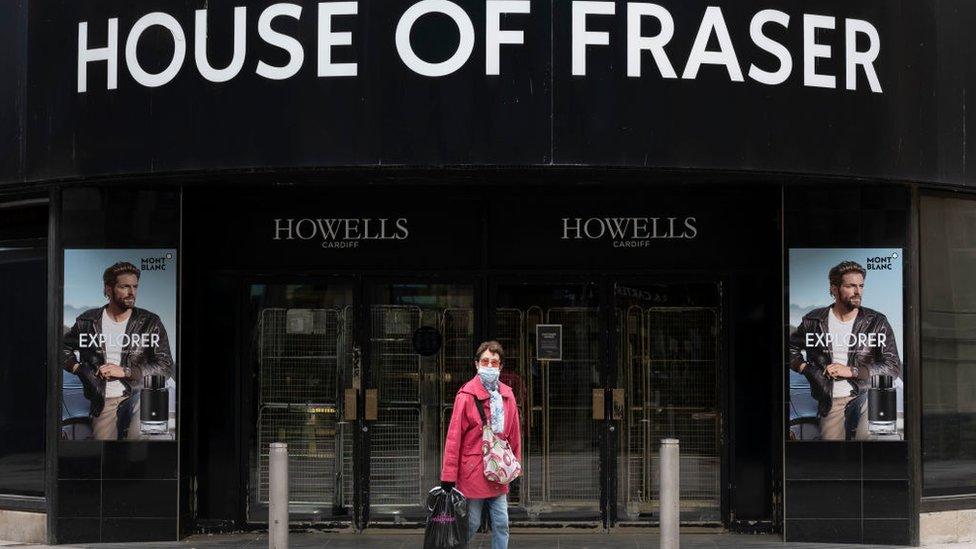Decision time for the furlough scheme
- Published

Restaurants will still be under financial pressure when the lockdown is lifted
The furlough scheme is coming to a close, but how it ends has a big impact on the future path of redundancies.
Flexibilities could include support for part-time work, for some industries and not others and for different parts of the country.
Boosting demand will be an important part of the return to work, where customers are cautious about going out and about spending.
The furlough scheme was easy to introduce, though eye-wateringly expensive to pay for 6.4 million people to do no work.
It'll be much more difficult to withdraw, and the costs won't go away quickly.
And for the Chancellor Rishi Sunak, who announces his plans for the future of the furlough scheme later today, withdrawing support for the economy will have to be aligned with support for boosting demand as the economy is allowed to reopen.
Furlough covers the four months from the start of March to the end of June, at 80% of normal pay, up to £2,500 per month.
It's estimated by the Chartered Institute for Personnel and Development that an absence of a furlough scheme would have increased unemployment by four million.
But given that the scheme has helped people get through the worst four months of the crisis, KPMG estimates there could be 1.2m people moving from furlough to redundancy. That would be by the end of this year. It won't all happen at once.

Some sectors such as construction may have to employ people on a part-time basis
A decision is required soon. If the furlough scheme ends in June, as currently planned, employers of more than 100 people intending to make staff redundant from 1 July would have to start the statutory 45-day consultation period by 16 May. For a firm with fewer than 100 employees, the 30-day consultation would have to start by the end of May.
That explains why the National Trust for Scotland, with 70% of its staff currently furloughed, is starting the consultation on Friday for redundancy for 429 people, and perhaps up to 500 "at risk" - more than half its workforce.
It expects to lose half its income this year - £28m. That's the same amount it has available in cash reserves. With 88 properties, it plans to open 28 of them when it can, and to mothball the others.
Festive season
The simple way of phasing out furlough, "easing" people back into work as the chancellor says he wants to do, is to reduce the percentage. So it could be at 60% through September, or it could be stepped down each month to different percentages.
A more complex concession to challenges facing different parts of the economy would be to continue it, at bigger percentages, for some sectors that find it more difficult to return to work.
The hospitality industry wants to see the furlough scheme continue until the end of the year, helping it get through the vital festive season.
One factor on which every business group is agreed is that there has to be a change to the rule that no-one is allowed to do any part-time work while on furlough, at least for their employer. (They can take on another job though.)
This blocks people from being able to work part-time to prepare a business for reopening.
And when it has reopened, there will be a need for many businesses to take people back part-time, so the furlough scheme could be adjusted to pay for part of the week for which there isn't sufficient work.
Repairing the economy
And that points to the other big challenge that Rishi Sunak, as well as other ministers and other governments, will have to do to boost demand in the economy, while it adjusts the supply of labour.
Take restaurants, for instance. If they can only open with a two-metre distance between tables, they can have far fewer customers. But restaurant managers are not able to cut their kitchen staff and overheads by the same proportion.
For most such businesses, social distancing simply won't be financially viable, so there's a strong case for maintaining support for such firms to operate at limited capacity.

Hundreds of thousands of staff in retail and leisure have been furloughed as businesses temporarily closed down
There's a lot more that the chancellor will have to do to repair the economy, because it's not just going to spring back to life as soon as people are allowed into shops and restaurants - people will need incentives to go out in public spaces, such as shops.
Businesses are going to be reluctant to place new orders from other firms in their supply chain until they've secured cash flow for that.
Incentives to employ
So there will have to be some clever moves by the chancellor, on tax as well as spending.
One idea from Germany is to cut tax temporarily on restaurant meals, to get people back through the doors. The clever bit is that it's been signalled this month, so that people book their meals for the point when the tax break is introduced in July.
Another idea from the United States, is that the loans now being made to companies with government guarantees come with incentives to retain workers.
So if a company retains the same number of workers for three years, the loan becomes a grant. In Britain, we've got no incentive for firms to avoid redundancy.
And the example of P&O ferries, announcing 1,100 job losses on Monday, shows the problem of a company taking furlough payments from the taxpayer when they then get rid of the staff rather than revert to paying them.
That makes the company look cynical, and the government look like it's wasted public money on protecting jobs that were doomed anyway.